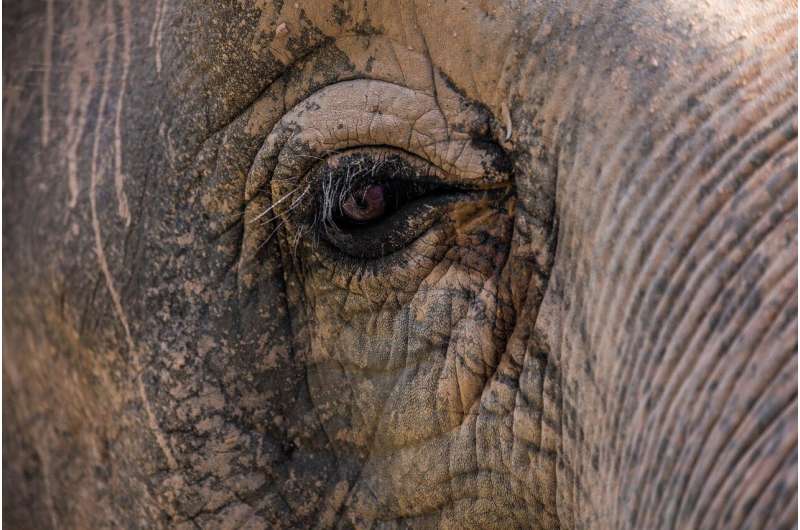Taming age survival of Asian elephants three times higher than in the 1970s—certain calves still more at risk

Researchers from the University of Turku (UTU) in Finland, and veterinarians from the Myanmar Timber Enterprise (MTE) in Myanmar have investigated the trends behind Asian elephant calf mortality during the taming period. They found that calves that were younger at the onset of taming and those with less experienced mothers were more likely to die during taming. Calf mortality in taming age was notably higher than that of wild elephants of the same age. The results of the study were published in the esteemed Scientific Reports journal.
Over a quarter of the remaining endangered Asian elephants in the world live in some form of captivity. The Asian elephant is particularly threatened, its population having halved since the 1950s and its range now only 5 percent of its original size. The Asian elephant as a species, however, is in a unique position with 24-29 percent of their remaining population living among humans, in captive or semi-captive conditions. Whilst the conservation priority lies in protecting the dwindling wild population, it is also important to protect these large human-managed populations. The largest of these populations is the semi-captive population of elephants working in the timber industry in Myanmar.
Past studies have highlighted that one of the factors most limiting the growth of this population is high juvenile mortality. Researchers from the University of Turku, Finland, together with the veterinarians responsible for the MTE elephants, have been investigating mortality during a particularly vulnerable time for these juveniles, the taming procedure they go through at the age of four years.
Calf Mortality at Taming Age Differs from Wild Elephants
The researchers first compared the survival of the semi-captive elephants to rates seen in a wild population of African elephants. They found that whilst the semi-captive elephants saw a more than 50 percent rise in mortality at the taming age of four, this was not the case for the wild elephants.
"This suggests that the rise in mortality we see at the age of four in the semi-captive elephants is a symptom of their management rather than a natural biological phenomenon," explains doctoral candidate Jennie Crawley, lead author of the study.
According to Crawley, a really promising finding is that calf survival has massively improved for taming aged calves in the last few decades. Calf mortality is now a third of the number witnessed in the 1970s. This suggests that changes introduced to the management of the calves have been successful in improving survival.
"It is important to note these management measures to also improve rates elsewhere. In Myanmar, this population has at least one veterinarian attending the calves daily for the duration of the taming, the calves are provided with constant fodder collected from their natural forest habitat, and they get to walk daily to a natural water source to drink and bathe."
Calves with Less Experienced Mothers at Highest Risk of Death
The research group also studied whether certain calves were more at risk of death than others. These calves could then be the focus of veterinary attention to improve survival further.
"We found that calves that were born later in the year, and therefore were younger at the onset of taming, were more likely to die, as were calves born to less experienced mothers, likely indicating calves in worse condition," says Professor Virpi Lummaa, the senior scientist on the study.
"In the past we have found that calves of mothers caught from the wild had lower survival than those of captive born mothers, but here we saw no effect of mother origin on calf survival during taming, which is good news considering over 40 percent of the individuals from our study period originated from the wild," explains postdoctoral researcher Mirkka Lahdenperä, co-author of the study.
According to Jennie Crawley, it is essential to actually monitor calves during this difficult period, rather than avoiding studying it as a controversial, taboo topic.
"This way, we can try to understand the dynamics surrounding mortality during taming in the hopes of improving survival."
More information: Jennie A. H. Crawley et al. Taming age mortality in semi-captive Asian elephants, Scientific Reports (2020). DOI: 10.1038/s41598-020-58590-7
Journal information: Scientific Reports
Provided by University of Turku



















